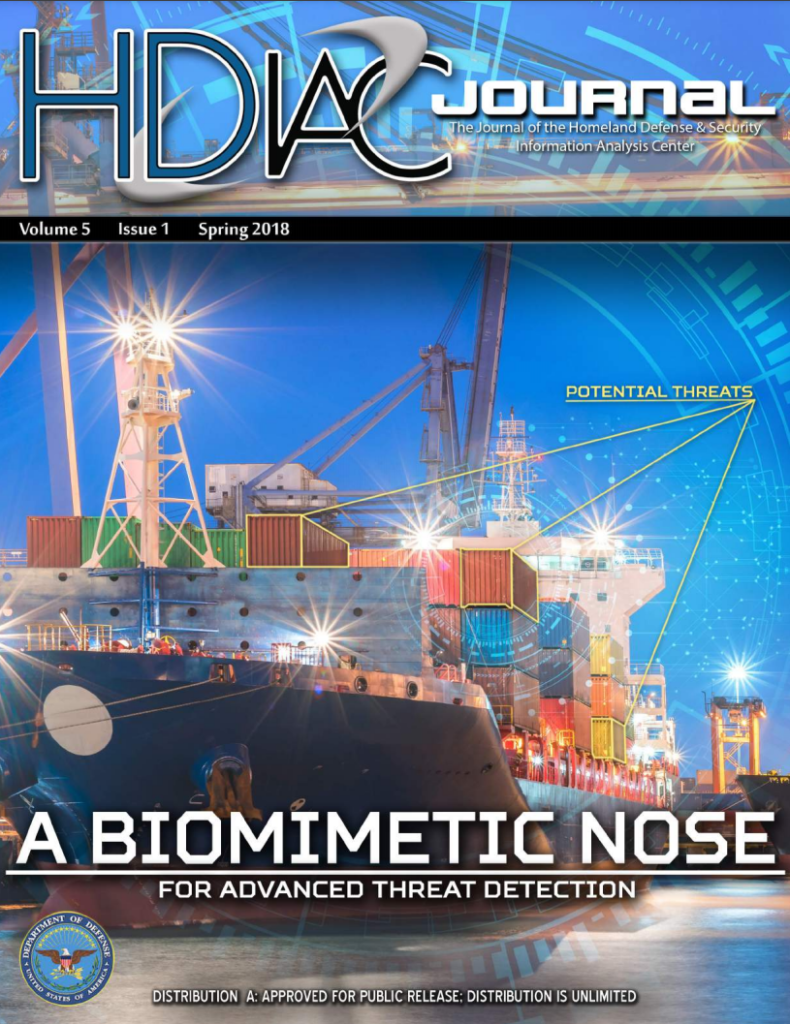This issue of the HDIAC Journal provides readers insight on seven of HDIAC’s eight focus areas. First, the Alternative Energy article discusses a gasification system that can be used on military installations. Next, the Biometrics article looks at the use of “super-recognizers” in security contexts. The Homeland Defense and Security article focuses on a novel “nose” used to detect advanced threats. The CBRN Defense article discusses flexible, wireless sensors. The Critical Infrastructure Protection article focuses on agroterrorism and mitigation strategies. The first Medical article centers on bio-fidelity for skin burns. The second Medical article discusses shape memory alloys in exoskeletons. Finally, the Weapons of Mass Destruction (WMD) article is the first of a three-part series on emerging technologies that can be used in WMDs.

Spring 2018: Volume 5 Issue 1
Published: April 11, 2018

